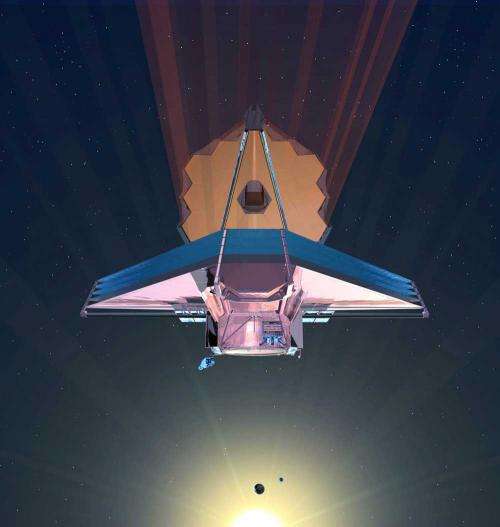James Webb Space Telescope sunshield is taking shape at ManTech's NeXolve subsidiary

ManTech International Corporation announced today that its NeXolve subsidiary has completed manufacturing and shape testing of the first layer of the James Webb Space Telescope's sunshield system. NeXolve is subcontractor to Northrop Grumman in manufacturing the one-of-a-kind sunshield membranes.
The Webb Telescope is NASA's largest science mission and will be the most powerful space telescope ever built. The five-layer sunshield system is designed to protect the telescope from the extreme conditions it will experience while in operation. As big as a tennis court, the sunshield layer is made of Kapton (Kapton is a registered mark of E. I. du Pont de Nemours and Company), a very thin, high-performance plastic with a reflective metallic coating. Each layer of the sunshield system must maintain a unique, complex shape on orbit to sustain the optimum environment for the telescope.
"Our team of engineers and technicians has worked diligently to complete the design and manufacture of this first layer," said Greg Laue, ManTech's sunshield program manager. "Completion of this layer's shape testing is the culmination of years of development and manufacturing."
After assembly, the ManTech team deployed the layer at its Huntsville, Ala., facility to verify its three-dimensional shape. Using multiple laser systems, a team of engineers compared the measurements to complex analytical computer models to verify that the layer was built to the exact specifications.
"We are extremely pleased with the results from the first flight layer. Its results met all our expectations," said Joshua Johnson, ManTech's lead test engineer. "We are now proceeding with the remaining layers and will test each layer in a similar manner over the course of the next year." After all five layers of the sunshield complete shape testing and model analysis, they will be sent to Northrop Grumman's Space Park facility in Redondo Beach, Calif., for final assembly and testing prior to launch in 2018.
Successor to the Hubble Space Telescope, the James Webb Space Telescope is the world's next-generation space observatory. It will observe the most distant objects in the universe, provide images of the very first galaxies ever formed and study planets around distant stars. The Webb Telescope is a joint project of NASA, the European Space Agency, and the Canadian Space Agency. For more information about the James Webb Space Telescope, visit: jwst.nasa.gov.
Provided by ManTech



















